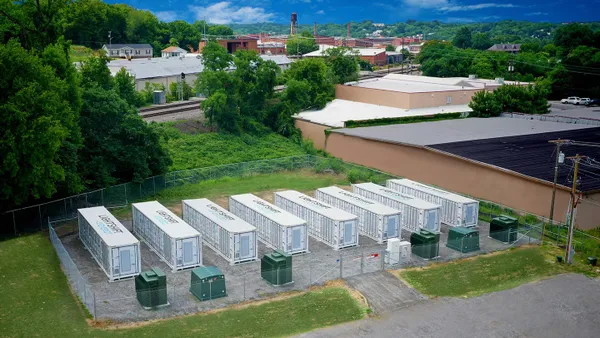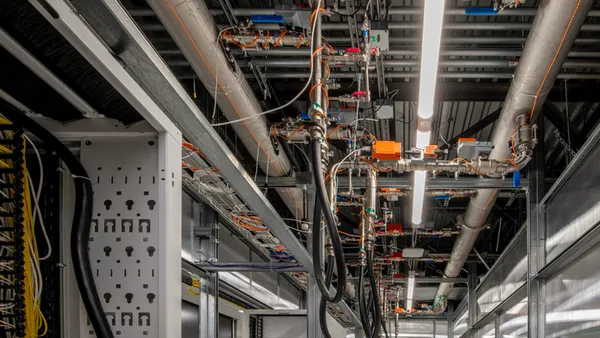Utilities across America face unprecedented forces reshaping how they source critical equipment. Cyber threats are growing. Tariff policies are shifting. And the best way forward is clear: building a resilient, domestic supply chain that delivers reliability, security, and long-term cost stability.
The Supply Chain Risks Utilities Can't Ignore
Let's be real about what's happening. The utility sector stands at a critical inflection point where global supply chain risks are immediate threats.
Cyberattacks on U.S. utilities surged by nearly 70% in 2024. These attacks exploit vulnerabilities in operational technology, including SCADA systems, smart grid infrastructure, and substation automation. With overseas sourcing, utilities have limited visibility into potential security risks embedded in their supply chains.
Simultaneously, tariffs are reshaping procurement strategies. In the US, only around 20% of transformer demand can be met by domestic supply, according to a Wood Mackenzie report from May 2024. Meanwhile, China accounted for most imported low-voltage transformers, and Canada provided a significant percentage of high-voltage switchgear. With new trade restrictions, utilities face rising costs and longer lead times for essential components.
The urgency is underscored by the American Society of Civil Engineers' recent downgrade of U.S. energy infrastructure to a D+ in their 2025 Infrastructure Report Card, citing aging grid systems and transformer shortages among key concerns.
Securing the Energy Storage Revolution
The explosive growth in battery energy storage systems (BESS) adds another critical dimension to supply chain security. While China currently dominates battery cell production, expanding American manufacturing capacity for both cells and electronic components is essential for true energy independence.
The U.S. currently has less than 10% of global battery cell manufacturing capacity—a strategic vulnerability as demand for grid-scale storage accelerates. Expanding domestic cell production reduces dependency on extended supply chains and creates thousands of high-skill manufacturing jobs. Meanwhile, the electronic components that control these systems—Battery Management Systems, Power Conversion Systems, and Energy Management Systems—present an immediate opportunity for North American suppliers to address cybersecurity vulnerabilities.
Battery cells may not pose direct cybersecurity risks, but securing their supply is equally vital for grid reliability. Recent DOE investments signal recognition of this dual imperative: secure both the physical supply chain and the digital control systems.
A Bipartisan Path Forward
Remarkably, strengthening domestic manufacturing has become one of the few areas where both political parties find common ground. The Infrastructure Investment and Jobs Act, the Inflation Reduction Act, and the CHIPS Act all passed with crucial bipartisan support in key areas. This cross-party consensus recognizes that energy security transcends political divides—it's about American competitiveness, national security, and job creation.
Private fixed investment in U.S. manufacturing nearly doubled from 2021 to 2023. For utilities, these bipartisan initiatives present a major opportunity. Domestic manufacturing means shorter supply chains, improved quality control, and greater cybersecurity protections. When components from battery cells to control systems are built in secure U.S. facilities, utilities gain end-to-end supply chain visibility—significantly reducing infiltration risks.
American-Made, Secure-by-Design
Forward-thinking utilities are prioritizing domestic sourcing with several key strategies:
Secure-by-Design Manufacturing: U.S. facilities integrate cybersecurity best practices from the ground up.
Zero-Trust Supply Chain Security: Utilities verify every component before deployment.
AI-Powered Monitoring: Artificial intelligence tracks supply chain integrity, flagging anomalies in component sourcing.
Industry-Wide Collaboration: Utilities, manufacturers, and policymakers work together to create resilient domestic supply chains.
This approach encompasses both battery cell production and electronic components. Major manufacturers like GE Vernova, Schneider Electric, and Honeywell have endorsed the DOE's Supply Chain Cybersecurity Principles, signaling commitment to enhanced security measures.
The Call to Action
Utility leaders must take proactive steps to reshape procurement strategies and strengthen U.S.-based supply chains:
- Conduct comprehensive cybersecurity risk assessments on energy infrastructure under NERC CIP-013
- Support the development of a comprehensive national grid hardening plan and transformer inventory as recommended by ASCE.
- Develop sourcing roadmaps that prioritize domestic manufacturing
- Advocate for policies that incentivize U.S. battery cell and control system manufacturing
Strengthening the Grid and the Nation
The convergence of cybersecurity threats and shifting trade policies presents both a challenge and an opportunity. Utilities and suppliers that prioritize domestic manufacturing—from battery cells to control systems—will protect their infrastructure while contributing to a broader industrial renaissance that strengthens national security, creates jobs, and will result in long-term energy resilience.
This isn't just about managing risk. It's about building a better, more secure future for the entire energy sector—one that starts with American-made components at the heart of our evolving grid.
About Torus
Torus builds smart, secure mini power plants. Our full-stack solutions for energy storage, management, security, and generation are customized to meet the unique needs of utility companies, commercial and industrial buildings, data centers, and defense facilities. Based in South Salt Lake, Utah, Torus is transforming how communities generate, store, and share energy. Our innovative Nova Spin flywheel energy storage system was recently recognized in TIME's Best Inventions of 2024 list. For more information, visit torus.co.










